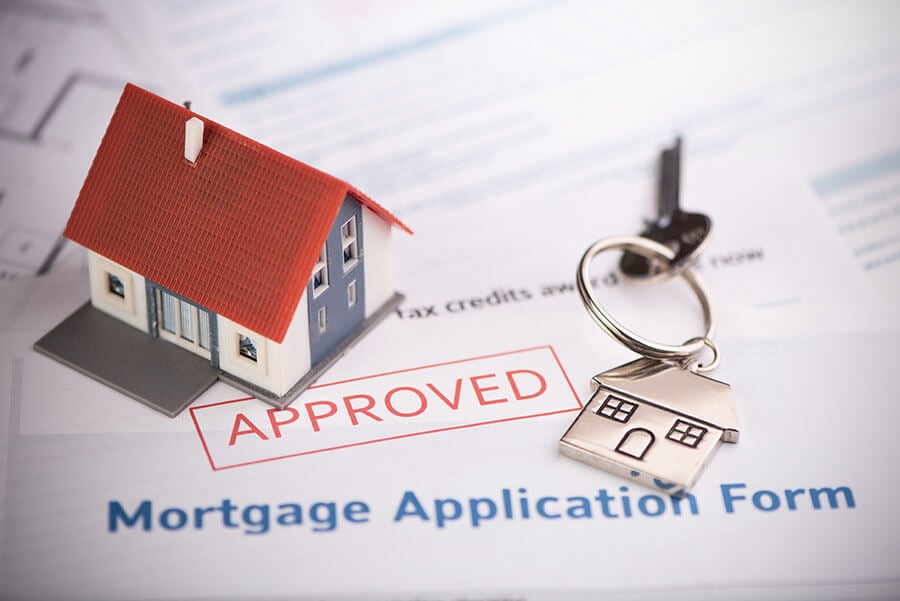A Full Review of Conventional Mortgage Loans for First-Time Customers
A Full Review of Conventional Mortgage Loans for First-Time Customers
Blog Article
The Crucial Aspects to Take Into Consideration When Picking In Between Fixed-Rate and Variable-rate Mortgage Loans
When examining home mortgage options, borrowers face a critical choice in between adjustable-rate and fixed-rate fundings, each providing possible mistakes and distinctive advantages. Trick considerations such as interest rate security, predictability in monthly payments, and the implications of prospective rate adjustments can substantially affect long-term monetary health.
Rates Of Interest Stability
When choosing a home mortgage, understanding rates of interest stability is important for notified decision-making. Rates of interest can substantially affect the total price of a home mortgage, and acknowledging the nature of these prices is crucial for customers. Fixed-rate home mortgages provide the benefit of consistent month-to-month payments over the life of the finance, shielding debtors from market variations. This stability allows property owners to plan their financial resources with better certainty, as they will not be impacted by climbing rate of interest.
On the various other hand, variable-rate mortgages (ARMs) begin with lower first prices that might change occasionally based on market conditions. While this can lead to reduced settlements at first, it additionally introduces unpredictability, as consumers may deal with boosted settlements if interest rates increase. For those thinking about an ARM, it is important to examine the chance of price changes, the potential for payment increases, and the length of the first fixed-rate period.
Eventually, the selection in between fixed-rate and adjustable-rate mortgages rests on specific threat tolerance and monetary conditions. Comprehending rates of interest security assists customers make notified decisions that straighten with their long-lasting monetary goals.
Monthly Settlement Predictability
While consumers frequently focus on rate of interest security, the predictability of month-to-month repayments is just as important in the home loan option process (Conventional mortgage loans). Month-to-month settlement predictability plays a crucial function in budgeting and monetary planning, as it straight impacts a home owner's money circulation and total monetary health
Fixed-rate home mortgages use a regular regular monthly repayment throughout the life of the finance, enabling debtors to expect and intend their expenditures effectively. This security can be especially useful for new homebuyers or those on a fixed earnings, as it eliminates the uncertainty connected with fluctuating repayments.
Conversely, variable-rate mortgages (ARMs) generally feature reduced first repayments that can transform in time, causing possible variability in month-to-month responsibilities. While at first appealing, this unpredictability can complicate financial planning, especially if borrowers do not account for future rate changes.
Prospective Price Modifications
In the realm of variable-rate mortgages (ARMs), potential rate adjustments represent a considerable factor that borrowers have to meticulously consider. Unlike fixed-rate mortgages, where the passion price remains unmodified for the life of the car loan, ARMs are characterized by changing rate of interest that are connected to market indices. This variability can bring about considerable changes in regular monthly settlements, affecting the debtor's monetary preparation and budgeting.
Debtors need to be mindful of the margin and index used to calculate these adjustments, as they straight affect future rate of interest prices. Furthermore, ARMs usually consist of caps that restrict just how a lot the rate of interest rate can enhance at each modification and over the life of the car loan, which can this content offer some level of defense versus drastic price walks.
Recognizing these possible changes is crucial for consumers, as they directly impact lasting payment commitments. Therefore, examining personal economic scenarios and take the chance of tolerance is vital when making a decision whether an ARM straightens with one's economic objectives.
Loan Term Considerations
Lending term factors to consider play a crucial function in the decision-making process for consumers selecting in between adjustable-rate and fixed-rate mortgages. The length of the finance term considerably affects regular monthly payments, interest prices, and overall economic planning.

Eventually, customers need to analyze their individual situations, financial goals, and market conditions when evaluating the ramifications of finance term choices within each mortgage type.

General Cost of Borrowing
Fixed-rate home loans supply predictable month-to-month repayments, as the interest rate stays constant throughout the funding term. This predictability can lead to lower general expenses, especially in a secure or declining rate of interest price atmosphere.
On the other hand, adjustable-rate mortgages (ARMs) generally start with lower preliminary rates, causing lowered upfront expenses. Nevertheless, these prices can increase after a preliminary duration, leading to possibly greater long-term costs. Debtors need to consider the frequency and extent of price changes, along with the total finance duration, to properly evaluate the financial effects.
Moreover, the overall cost of borrowing encompasses not only rates of interest however additionally fees and various other associated prices, such as closing prices and insurance coverage (Conventional mortgage loans). As a result, when evaluating home mortgage alternatives, borrowers should carry out a complete price analysis over the life of the car loan. By doing so, they can make an informed decision that lines up with their monetary objectives and Go Here take the chance of resistance
Final Thought
In conclusion, choosing in between adjustable-rate and fixed-rate mortgage fundings requires careful consideration of a number of essential variables. Passion price security and month-to-month payment predictability are critical for efficient budgeting, while the capacity for rate adjustments in ARMs introduces financial uncertainty. Additionally, the awaited duration of homeownership and the general price of loaning, including rate of interest and linked costs, must align with individual monetary scenarios and take the chance of resistance. Such an extensive evaluation will certainly facilitate enlightened decision-making in home mortgage option.
Key factors to consider such as interest price security, predictability in monthly settlements, and the implications of possible rate adjustments can substantially affect lasting financial health. Interest rates can significantly affect the general expense of a mortgage, and recognizing the nature of these rates is necessary for customers. Unlike fixed-rate home loans, where the interest rate remains unchanged for the life of the funding, ARMs are defined by varying home interest rates that are connected to market indices. In addition, ARMs usually include caps that limit exactly how a lot the interest rate can enhance at each change and over the life of the funding, which can give some degree of security versus drastic price hikes.
Interest rate stability and month-to-month repayment predictability are critical for effective budgeting, while the possibility for price adjustments in ARMs introduces financial unpredictability.
Report this page